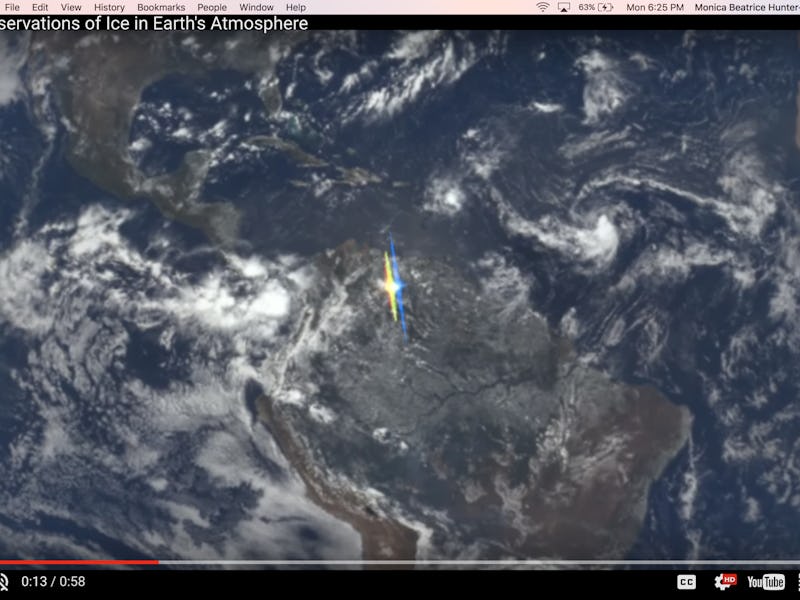NASA Notices Unexpected Flashes of Light Reflecting Off Earth

Scientists have identified strange light flashes emanating from Earth. First noticed in images taken by the Galileo spacecraft in 1993, but overlooked since then, these glints were recently rediscovered in photos taken by NASA’s Earth Polychromatic Imaging Camera (EPIC) since its 2015 launch. Researchers have now figured out that the flashes are sunlight bouncing off of ice crystals high in the air, and that they might even be able to help us find other habitable planets.
EPIC photographed hundreds of the flashes over the course of a year. After studying the images, researchers realized that the glints only appeared when the camera was at the same angle to Earth as the sun was to Earth. That meant that they had to be reflections of sunlight (as opposed to a light source originating from Earth, like lightning); but off of what were they reflecting?
At first, scientists suspected that the light was reflecting off ground water sources, like lakes. But ultimately EPIC data showed that the flashes were coming from a high altitude, around cirrus clouds, so researchers decided that the culprit had to be ice particles.
“It’s definitely ice, and most likely solar reflection off of horizontally oriented particles,” Alexander Marshak of NASA’s Goddard Space Flight Center said in a press statement.
One of the flashes coming from East Africa, seemingly Tanzania.
Beyond the satisfaction of finally figuring out what the heck these light flashes are, this new information yields assets for future space research. If spacecraft can detect lights like these coming from exoplanets, that may indicate that ice particles exist in their atmospheres, too, and maybe even that the planets could be habitable for humans.
Researchers plan to look more into this phenomenon to figure out whether it has a perceptible effect on the amount of sunlight that can enter Earth’s atmosphere; in that case, they would also affect the process by which our planet gets most of its heat.
NASA released a short video describing these findings. Check it out below.